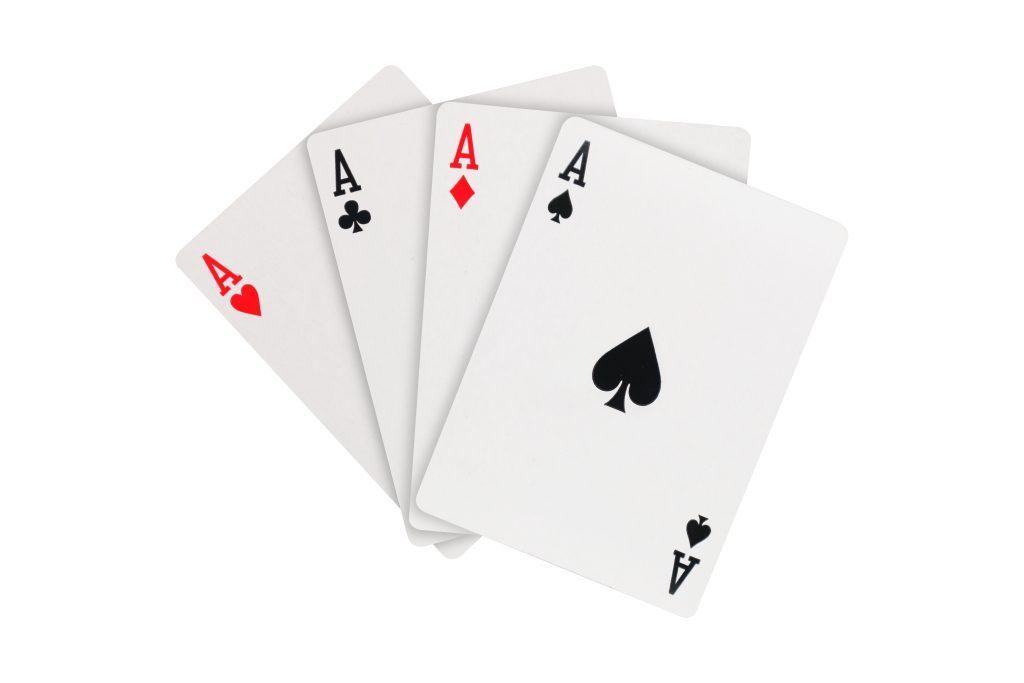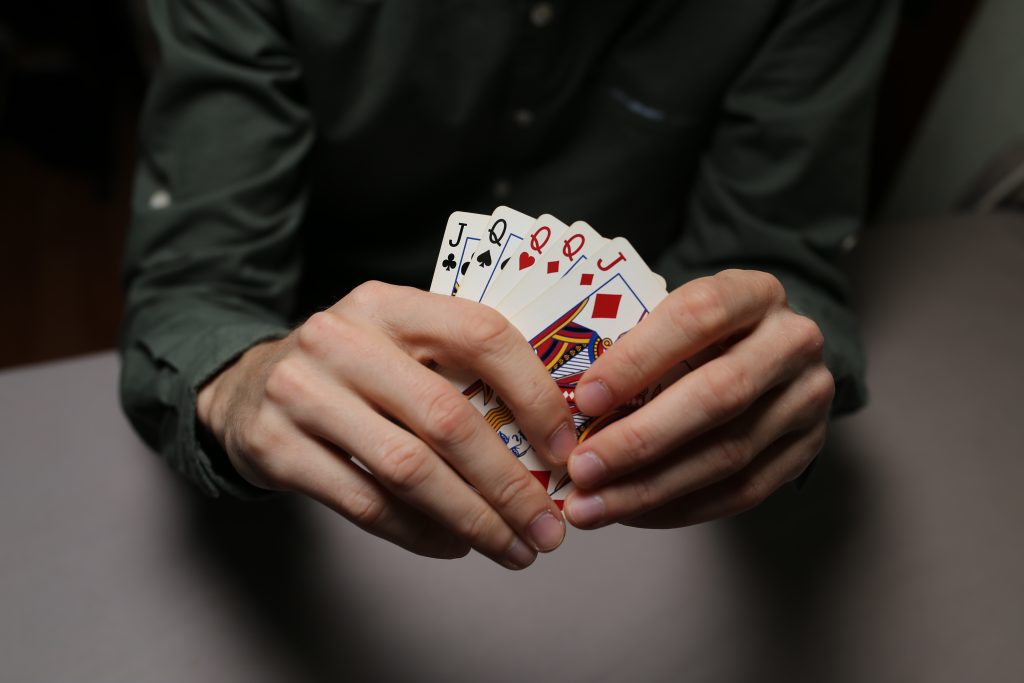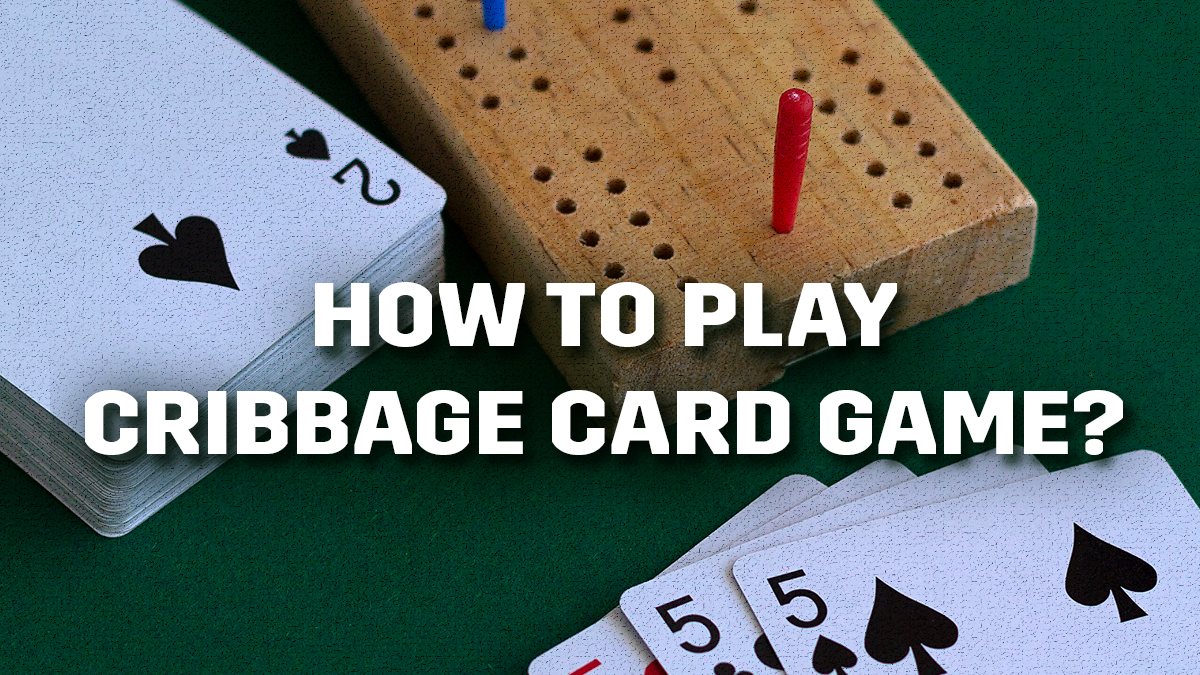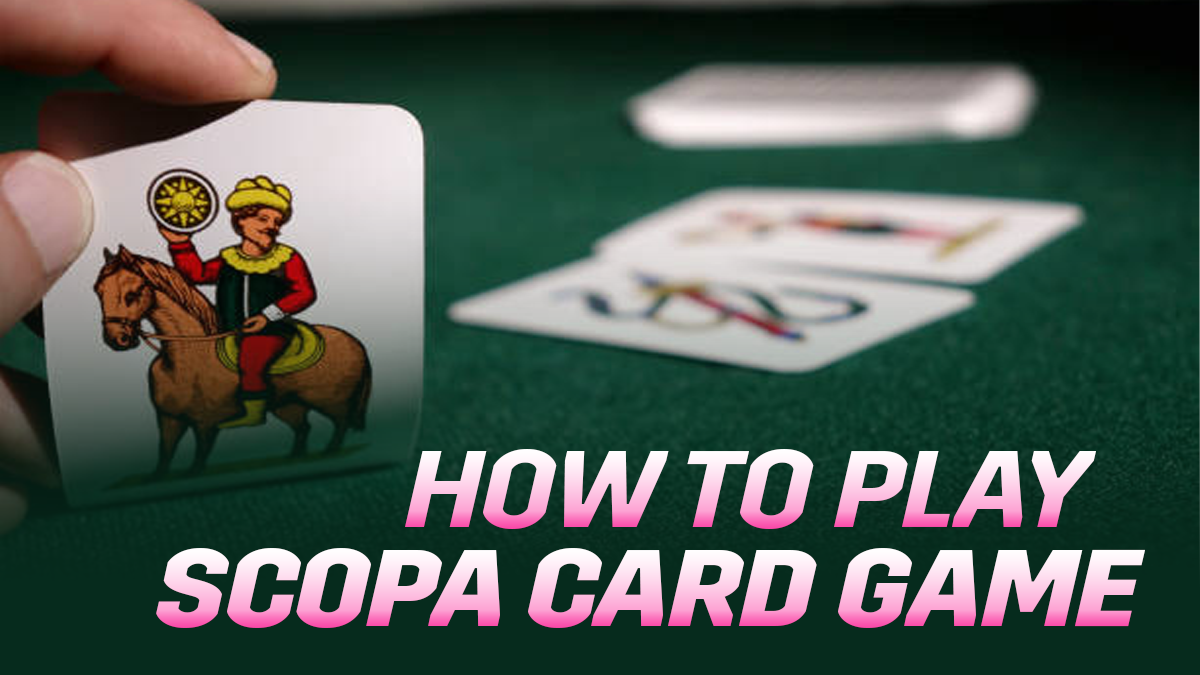Table of Contents
ToggleCard games have always been fun. They bring you an amalgamation of complexity and entertainment, which is perfect for a social gathering or just a fun time with the family. And cribbage is one such game.
Previously known as Noddy, cribbage was invented by Sir John Suckling, who was a wealthy English poet. The card game uses a cribbage board to keep the score and is fast-paced, so it ensures every moment is fun.
So, here’s everything you must know on how to play cribbage, cribbage rules, and more. Perhaps you are a beginner eager to grasp the basics, or you may be seeking advanced tips to win the next cribbage game.
Get ready to navigate the crib, peg your way to victory, and revel in the charm of this classic game.
What is Cribbage?

Source: Favepng /shutterstock
Cribbage is a classic card game that needs a blend of skills and luck, like several other card games. However, it comes with its own unique scoring twists and rules that offer an element of fun.
Played with a standard 52-card deck, participants take turns forming card combinations to earn points on a unique scoring board called the cribbage board. The game consists of distinct phases, such as dealing, discarding to the crib, and playing cards in a sequence. So, understanding the common terms before you proceed makes it super easy for you to stay on track.
In cribbage, players score points for card combinations like pairs, runs, and sums of 15. The exciting feature of cribbage is the use of a special board with pegs, where players advance by scoring points. Even today, cribbage is popular for its traditional charm and can be found on exclusive online gaming platforms.
History of Cribbage Game
Cribbage dates back to the 17th century. It is believed to have been created by English poet and courtier Sir John Suckling. The game was originally called Noddy. But as the years passed, it evolved into cribbage.
It was an extremely famous game during the 17th century, but after that, it lost its charm. However, it came back to popularity in the 19th century when it was embraced by sailors. American Sir John Franklin is often credited with introducing cribbage to the United States. The game’s unique scoring board, known as the cribbage board, featuring a series of holes and pegs, was patented in the mid-19th century.
Today, Cribbage remains a beloved pastime, blending history, strategy, and pure fun across generations.
Why is it called Cribbage?
The origin of the name cribbage and where it comes from is not entirely clear. However, there are several theories about its etymology.
One commonly accepted theory is that the name may have derived from the word crib, which is the special hand of four cards set aside for the dealer. This unique hand, the crib, is crucial to the game as it adds an extra layer of strategy and scoring possibilities.
But there is another theory behind the name cribbage. It is said that it may have originated from the English word crib, meaning a basket or container. Since the cribbage board has a series of holes or slots that almost resemble a basket or container for pegs, people think this might have led to the name.
Common Terms in Cribbage
If you are a beginner, you must know these common cribbage terms to embark on a non-stop winning streak and the gaming jargon doesn’t confuse you. Learning the common terms is important before you understand how to play cribbage. These terms can also be used during a tournament play.
Crib: It is the special hand of four cards that is set aside for the dealer after the players have each discarded two cards into it.
Muggins: It is a game rule where points are not claimed by an opponent during scoring and can be claimed by the player who scored them.
Pegging: It is the process of moving pegs on the cribbage board based on the cards played during the play phase of each hand.
Go: Go is a term used when a player cannot play a card without exceeding 31 points, and the opponent scores one point. The go card is also the last card.
15-2: A scoring combination where the cards played add up to 15 points. Here, the cards may not be of the same rank.
Pair: Two cards of the same rank played consecutively and scoring two points is known as a pair.
Run: Run is when three or more cards are played consecutively and scores one point for each card in the run.
His Heels: His Heels are the Jack of the same suit as the starter card, and this scores two points for the dealer.
Nobs or Nibs: It is one point for holding the Jack of the same suit as the starter card in hand.
Flush: Flush is four cards of the same suit in the hand or crib and gives you four points.
Double Run: It is a sequence of three or more cards that can be counted as two runs and lets you score extra points.
Double Pair Royal: A double pair royal means having two sets of three cards of the same rank in a player’s hand. Double pair royal combination is also commonly known as Double Run of Three or Double Three of a Kind.
Skunk: When the player wins by more than 30 points, it is often considered a more significant victory and called a skunk.
Street: A sequence of four cards in consecutive order, which scores you extra points, is known as a street.
Box: It is the slang for the crib, derived from the practice of keeping the discarded cards in a separate box.
Cut for Deal: The process of determining who gets the first deal by drawing cards from the shuffled deck is known as cut for deal.
Dealer’s Hand: The dealer’s hand refers to the cards that the dealer has after the players have selected the two cards to be placed in the crib.
How to Play Cribbage Card Game?

Source: Alena Marchuk /shutterstock
Intrigued and want to know how to play cribbage? Let’s understand how the game is played.
Number of Players
This game can be played with two to four players. The rules remain mostly the same regardless of the number of players. However, there are a few modifications you must consider.
Two Players
In the two-player game, each one is dealt six cards. A standard turn-based system is followed, with the non-dealer leading the play and the dealer leading in subsequent rounds. The game is typically played to 121 points, which is the target score.
Three Players
Here, each player is dealt five cards. The player to the dealer’s left leads the play, and the play continues in turn. In a three-player game, there is no crib, and the dealer scores points only for their hand.
Four Players (in pairs)
Players form two teams, sitting across from their partners. Each player is dealt five cards. Players on the same team combine their scores for the play and the hand, but each player scores for their own crib. When the player reaches 121 points, they win.
Objective
The main objective of cribbage is to score points through an array of card plays and to form specific card combinations during the game and in the crib. Here, you use a standard 52-card deck.
Each player draws a card. The player who gets the lowest score compared to the other players becomes the first dealer. In the next game, the loser of the previous game becomes the dealer, and so on.
Cribbage Rules and Gameplay
The dealer shuffles the deck and allows the non-dealer to cut the cards.
The cards are then distributed, with each player receiving six cards. The first player to whom the cards are dealt is not the dealer but the other participant. Players choose two cards to discard face down into the crib, which belongs to the dealer but is scored by both players at the end of the hand. Each player is left with four cards as they start the game.
The non-dealer, also known as the pone, cuts the remaining cards, and the dealer reveals the top card of the cut. The top card is known as the starter card. If this card is a Jack, the dealer scores two points. In cribbage, you don’t have to look for a matching card.
The non-dealer plays a card face-up on the table, and the dealer follows suit with their cards. The cumulative total of the cards played is kept with players announcing the running total as they play. Face cards, such as Kings, Queens, and Jacks, are 10 points, and Ace counts as 1.
Players continue taking turns playing cards until the total reaches 31. They can no longer play if they exceed 31. A player lays the cards throughout the game until the last card. If a player cannot play without going over 31, they say Go, and the opponent continues playing until they can no longer play. Players score one point for each card played in the sequence and two points for reaching exactly 31.
Players then retrieve their played cards and start a new round until all cards are played. After the play, players score their hands. Points are scored for various combinations such as pairs, runs, and sums of 15 within the player’s hand and the crib.
The dealer and non-dealer take turns counting the points in their hands and the crib. The player who scores the highest wins.
Scoring In Cribbage
15s: If any of your card combinations score a 15, you get 2 points. It doesn’t have to be the same card of the same suit or rank. You can try scoring combinations with the cards in hand to reach the number.
Pairs: Two cards of the same rank score 2 points. Three of a kind is six points, and four of a kind, 12 points are awarded.
Runs: A sequence of three or more consecutive cards scores one point per card. For example, a run of 3, 4, 5 scores 3 points. Here, it doesn’t have to be the same suit of cards.
Flush: If all four cards in the hand (excluding the crib) are of the same suit, the player scores 4 points. If the starter card is of the same suit, the player scores 5 points. So, how many points to win? The first one who reaches the agreed-upon number of points wins. It is usually 121 or 61 points. The scoring of the game takes place on cribbage boards. Usually, the winner scores in cribbage are always an odd number.
Tips To Win Cribbage
Here are a few tips that can help you emerge as the winner almost effortlessly!
Counting Cards
Right from when the cards are dealt, always pay close attention to the cards played and try to keep track of what is still valid in the game. Also, memorize the cards that have been placed in the crib as well.
Experienced players do this because tracking cards in play enhances your decision-making and helps form strategies during both the pegging and counting phases.
Pegging Strategy
Having a pegging strategy in place can prove effective. Here, be mindful of potential runs, pairs, and cumulative value of the cards during pegging.
Try to peg defensively, blocking your opponent’s scoring opportunities. Also, keep an eye on the sum of the cards played to avoid giving your opponent easy points.
Discarding the Crib
When discarding the crib, try to minimize the chances of your opponent getting high-scoring combinations. Consider keeping cards that work well together for potential runs, pairs, or a flush so points awarded are done accordingly.
Lead the Right Card
If you have a choice when leading, consider leading with a card that is less likely to create a scoring opportunity for your opponent. Leading a 5 can be a good choice as it often creates opportunities for runs.
Strategize Based on the Strength of Your Hand
Adapt your strategy based on the cards in your hand and the crib. If you have a strong hand, play conservatively to avoid giving your opponent too many pegging points. If your hand is weaker, focus on pegging points during the play.
Focus on the Board
Make sure you keep an eye on the current score and adjust your strategy accordingly. You must also see the player’s score to understand where you stand. This will help you make decisions about whether to play aggressively or conservatively.
Maximize Your Hand’s Potential
As the game progresses to the counting phase, assess your hand for scoring combinations like pairs, runs, and flushes. Look beyond face value and identify hidden potential in all the cards. This focus on both play and counting helps you extract the maximum possible points from your hand.
Practice Regularly
This is obvious, but the more you play, the more you will develop a sense of strategy and learn to anticipate your opponent’s moves. Practice can improve your skills and understand the intricacies of the game.
Analyze The Game
Analyze your games, especially losses, to identify areas for improvement. Recognize patterns in your opponent’s strategy and adjust your gameplay accordingly.
Stay Focused
Cribbage requires concentration, so avoid distractions while playing. Take your time to make decisions, especially during the counting phase.
Variations of Cribbage Game
When it comes to cribbage, there are a plethora of variations to the game that make it all the more exciting. What are they? Take a look!
Six-Card Cribbage
Six-card cribbage is a compact variant of the classic card game that we all know and love. In a way, it condenses the action into a smaller deck.
Played by two players, each player is dealt with six cards, and they discard two to the crib. The crib belongs to the dealer and contributes points at the end. The remaining four cards are used for play.
Players take turns playing cards. Here, you must reach 31 without exceeding this number. Face cards have values, while numbered cards match their face value. Combinations like pairs, runs, and totals of 15 score points.
Five-Card Cribbage
Five-card cribbage is another variant of the classic card game, which is played with two players. Here, each player is dealt five cards, and they each contribute one card to the crib.
The crib is a separate hand that the dealer gets points for at the end. The remaining four cards form the main hands for play. Players take turns where they strive to reach 31 points without going over.
Face cards hold specific values like 10, and numbered cards contribute to their face value. Players score points for pairs, runs, and reaching 15.
Speedo Cribbage
There are several cribbage games played all across the globe, and one such variant is Speedo Cribbage. It is fast-paced and brings you something different than the traditional cribbage. Designed for two players, each participant is dealt five cards, starting with the player who isn’t the dealer. There is no crib in this variant.
The objective remains to score points through combinations and reach 31 without exceeding. Speedo Cribbage introduces a time element, adding a sense of urgency to each round. Players must make quick decisions and play cards rapidly for more points. It’s fun and absolutely entertaining!
Shotgun Cribbage
Shotgun Cribbage puts a unique spin on the classic card game. It offers a lively and engaging experience for two players. In this variant, 10 cards to each player are dealt. So, the game doesn’t end after the fourth or fifth card.
The crib is absent here as well and focuses on direct competition. The objective remains to score points through sequential card combos like pairs or runs, so the card completes a total of 31. With a larger hand, players face more choices, which means more excitement and easy to make more points.
Conclusion
This was everything you must know about how to play cribbage. Now you are all set to ace the game!
Cribbage offers more than just entertainment. It is, in fact, a stimulating experience that encourages strategic thinking. Also, the game’s unique combination of hand assessment, scoring tactics, and the gameplay and pegging phases make it all the more fun. When you know all the cribbage rules, it can be played for leisure or even as a social activity. Try it today and say yes to the thrill it offers!
FAQs
Can you score three points with the same cards in cribbage?
Yes, you can score three points with the same cards in cribbage. They include a combination of a pair, a pair royal (three of a kind), or four of a kind in the hand or crib. These cards result in three points.
Is cribbage hard to play?
Cribbage is not difficult to play. However, it does involve strategy and counting skills. Therefore, learning the rules and understanding may take some practice. That said, it is an enjoyable game.
What is the highest score in cribbage?
The highest score in a single cribbage hand is 29 points. It is achieved with a perfect hand of cards and the cut card.
How to score 2 points in cribbage?
In cribbage, scoring 2 points can be done by playing a card to create a pair with the previous card and forming a combination totaling 15. You can also score 2 points by reaching an exact total of 31. If you are looking to score 2 points, you must be strategic in your approach.
What do you do with the last card in cribbage?
In cribbage, the last card played during the counting phase is crucial. The player who plays the last card without exceeding 31 scores one point. If the total reaches exactly 15, the player scores two points. Also, the last card is important to form pairs, runs, and other combinations for scoring.
What are two pegs?
In cribbage, two pegs mean moving ahead in the scoring pegs on the cribbage board by two spaces. The cribbage board typically has a series of holes or tracks used to keep score during the game. Each set of holes represents a certain number of points. When a player scores points during the play or counting phases, they move their scoring pegs along the board.
Who counts the points at the end of the game? Is it the dealer?
The dealer counts the points along with the other participants. After the play and show phases, players take turns counting the points in their hands and the crib. The non-dealer usually counts their hand first, followed by the dealer.
Is cribbage good for the brain?
Yes, if you are looking for a card game that can be a great mental exercise, cribbage is a good option. Like many card games, cribbage involves strategic thinking, critical decision-making, and mental calculation. Players must assess their hands, make choices during the play phase, and intelligent discard cards to the crib to ensure they win. The game also requires counting points and keeping track of the score, which engages cognitive functions.








